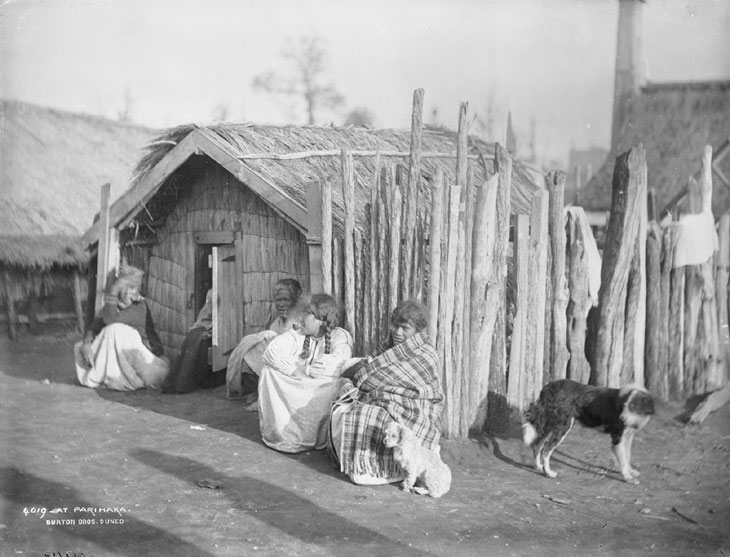 'At Parihaka', c1887
'At Parihaka', c1887
TLF ID R6476
This is a black-and-white photograph taken around 1887 at Parihaka, Taranaki, on the North Island of New Zealand. It shows a traditional Mäori whare or house in the background, complete with a tall wooden fence. Four people sit in front of the whare, wrapped in blankets. The door is ajar and it looks as though a fifth person is sitting in the doorway. There is a small dog sitting with one of the people and another standing in front of the fence to its left. The writing at the bottom of the photograph reads '4019 - At Parihaka. Burton Bros. Dunedin'. The photograph is the work of the Burton Brothers and measures 16.5 cm x 21.5 cm.
